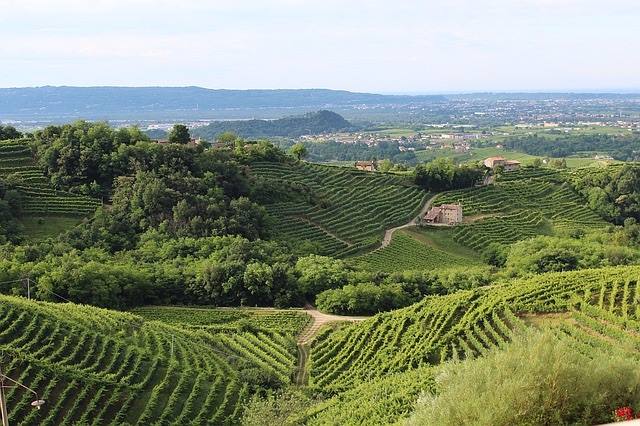
On your quest for new wines for your collection, you’ve undoubtedly come across the term “terroir.” But what does terroir mean, exactly?
Defining Terroir for Wine
Terroir is a loose term that encompasses various things. What they are depends on whom you ask. In general, though, it means “a sense of place.” Essentially, terroir encompasses all of the factors that go into producing wine grapes in a vineyard, from the climate to the soil to the elevation.
The idea behind terroir is quite old, dating back to the Ancient Greeks who engaged in extensive winemaking. Ancient Greece had plenty of climatic variations, with vineyards exhibiting different results even when growing the same grape variety.
The ancient idea of “terroir” led the Greeks to stamp their amphorae jars to identify where they came from. As the Romans expanded their empire, they applied the same practice to their winegrowing regions. The idea took on deeper meaning by the time of the Benedictine and Cistercian monks in Burgundy, where monasteries took control of the vineyards.
Rules regarding terroir and vineyards strengthened over generations, and by 1861, modern vineyard classifications were beginning to take shape. In 1936, the official appellation d’origine controlee (AOC) legislation was implemented across France. It later migrated to other parts of the world under names like the American Viticultural Area (AVA) in the United States, the Denominazione di Origine Controllata (DOC) in Italy and the Demoninacion de Origen Protegida (DOP) in Spain.
How Do People Use the Term?
One term can mean many things to different people. This can sometimes lead to confusion when discussing wine.
You might use terroir to describe all of the physical attributes that go into growing grapes, but you might also consider what happens during winemaking to be part of the terroir – especially if it is a long-standing tradition at an Old World vineyard.
You might even consider human manipulation and canopy management – such as pruning stems, thinning leaves and positioning shoots – to be part of terroir, since it can certainly alter the final taste and quality of a wine.
Typically, though, the use of terroir focuses on the natural environment, where the climate, rainfall, soil, elevation and land features combine to influence the grapes and lead to the wine's distinctive personality – its unique terroir.
Winemaking techniques influence the wine and lead to brand characteristics, but they are separate from what creates a sense of place. It’s true that Old World villages and towns often use traditional techniques to make their wine, but those contribute to the regional style, not the terroir.
Place shapes identity, much the way your hometown helped to shape your personality. You can move away from your birthplace, but you’ll take certain preferences, ideas or beliefs with you that you wouldn't have picked up elsewhere. It’s the same with wine. Terroir shapes those grapes and helps differentiate them from grapes grown in other regions.
The 4 Traits of Terroir
Climate
This trait ranges between two extremes: cool and warm. Cooler climates have lower temperatures and more rain, and they produce wines with lower alcohol content and more acidity. Warmer climates have higher temperatures and less rain, and they produce wines with higher alcohol content, more body and juicier fruits. In the real world, the difference is rarely that clear-cut, since little variations in climate have an effect on the grapes.
Daytime and nighttime temperatures, humidity, wind flow and proximity to the ocean all work together to form climates across the world. Wine regions like Bordeaux, Napa Valley and Australia’s Barossa Valley all grow Cabernet Sauvignon, but the terroir of each place leads to distinctive characteristics in each wine.
Geomorphology
This is a broad category for the features that shape the land, such as mountains, valleys, rolling hills, rivers and lakes. Elevation and slope will influence the grapes, with sunnier slopes and lower elevations providing easier growing conditions than shaded slopes and higher elevations.
Soil
There are many types of soils, from clay to sand to limestone to volcanic soil and more. You’ll never see different soils behaving the same way, since their components affect water drainage, fertility and heat retention in different ways.
Flora and Fauna
Finally, the plants, trees and microbes that live in and around vineyards help shape the grapes' growing conditions, by extension, the wine's terroir. In particular, microbes like fungi, bacteria and yeast help to shape the biogeographic characteristics of a region. They produce complex interactions in the soil and on the surface of the grape itself.
How Wines Reflect Their Terroir
Once you understand the definition of terroir, you’ll start to see how it shows up in a wine’s profile, in everything from the flavor to the alcohol content to the texture.
If you look at wines like Sauvignon Blanc from the Loire Valley, you’ll see plenty of acidity mixed with racy, rich fruits. This is a result of the cooler temperatures and days that alternate bright sun with heavy rain.
In Australia’s Barossa Valley, you’ll see wines like Shiraz and Cabernet Sauvignon with bold, juicy fruits, a rich earthiness and higher alcohol content. This is primarily due to the dazzling sunshine, drier climate and wide swing between night and day temperatures.
As much as winemaking techniques and processes influence wine’s characteristics, the base physical attributes of place have the most important role. We’re sure you’ll agree that this rich diversity of terroir is a big part of what keeps us coming back for more.
To learn more about the fine wines we offer, or to discuss wine reviews, wine storage and other services, reach out to us at JJ Buckley Fine Wines. We provide professional consultation services designed to meet your every wine-related need.